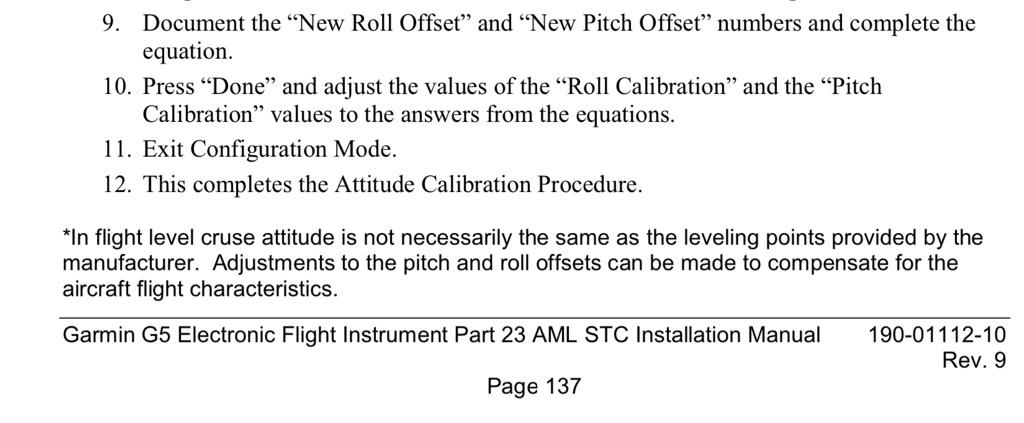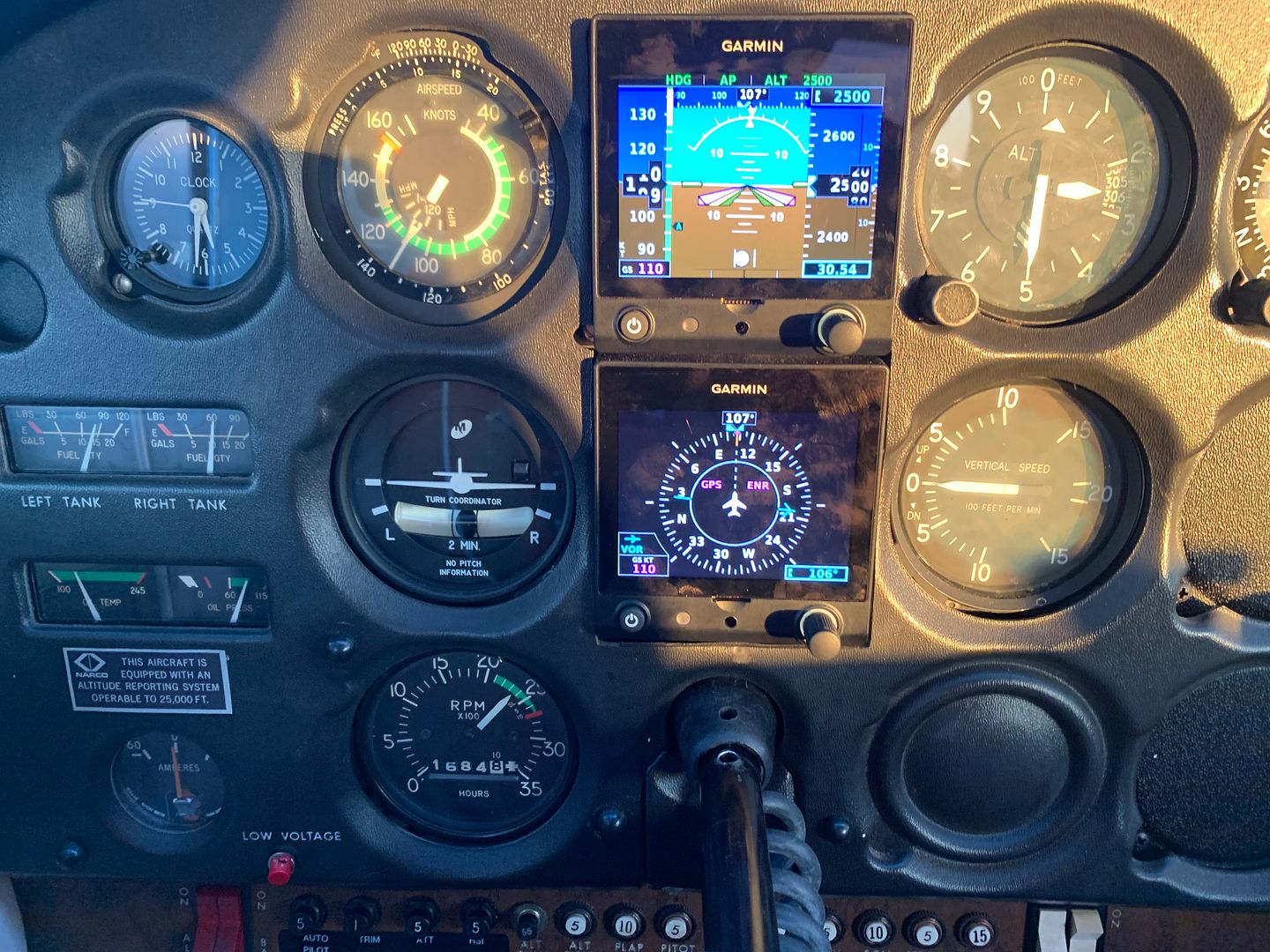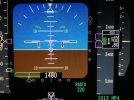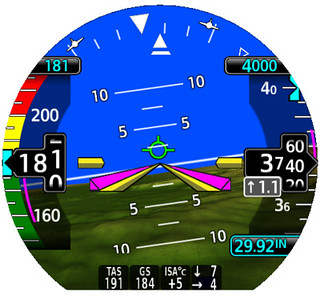FYI I have done my research but want to get feedback from people who have zeroed out pitch attitude in flight. This is a club plane. It is in hanger for annual, which I am teaching Instrument students.
I asked our club maintenance, A&P / AI to adjust it so it reads level in cruise not 3 degrees nose up. He installed the dual G5's in this plane. I am sure there is nothing wrong with the unit itself (AHRS). I am sure our A&P followed the Garmin instructions to his understanding. I have read those instructions and talked to Garmin.
HOWEVER tells installer to reference Manufactures LEVELING instructions. LEVEL in Cessna Manual is LEVEL for rigging plane. It was not intendant to LEVEL Electronic Flight Instruments that did not exist at the time. Most know the common GA Vacuum Attitude Instrument the pitch reference was adjustable. This was to account for different pilots seated height, parallax, preference. The knob was on face, similar to say altimeter Baro setting knob, there to adjust as required.
To get this Cessna AIRCRAFT LEVEL (to ground not flight level) you compress the nose strut, jack the mains and use two screws on side of fuselage and level.
On level ramp, strut inflated normally, the plane sits nose high, close to flying attitude in level flight. The GARMIN Installation instructions does not specify HOW to level plane but refers you to manufactures maintenance manual. Of course the manufacture (Cessna) does not have a FLIGHT ATTITUDE level. I think some planes do have this procedures. You mechanics let me know please.
Garmin says it is OK to level the plane to flight attitude stance to calibrate. I need to convince my A&P of this, point of this thread. Getting all the data to present to Maintenance.
NOTE: The certified G5's are not (easily) PILOT adjustable (the ones sold to experimental or EAB kit plane builders are adjustable by pilot without out going into CAL MODE). This G5 is in a certified mighty Cessna. This does not mean you can't change the certified G5, only it is not intended to be pilot adjustable, requires some special button pushing,.
NOTE: I talked to GARMIN and they said STC does not prohibit calibration to read level in flight, only that it be set and left alone.
NOTE planes can be built a little off, the level reference screws in the case of Cessna off as well.
Question, Keep in mind I am going to coordinate this with a licensed A&P and AI: HOW TO LEVEL IN FLIGHT ATTITUDE OR CAL THE G5 TO READ LEVEL IN FLIGHT:
My guesses
1) Set it level per Cessna and subtract an additional 2.5 degree off set nose down;
2) Level plane 2.5 degree nose up from Cessna level, using digital inclinometer (using Cessna's level datum), set Cal offset to read level.
3) Do it in flight if possible, VFR of course (any one do this?)
PLEASE DO NOT SAY HOW TO GET INTO CAL MODE. If you like to PM me that would be welcomed. I think I know, not a big secret at this point.
I understand WHY GARMIN and REGS have made it so it is not a (easy) pilot adjustment.
Again this will be done with/by A&P and I have coordinated with Garmin.
People with personal G5 experience, observations, success in getting G5 to read level in flight, how you did it, love to hear your input.
Please no opinions, criticism unless I said something wrong, then give me a hard reference please; just facts, observable experience please, much appreciated.
I will discuss with my A&P and tell him what I found. Right now he is OK with it as is, but then he is not a pilot. He is right, it is OK if you accept flying 3 degrees nose up as level flight. I do not accept it and there is no reason to tolerate it. I need to explain it to him.
Kind Regards
George
CFI-I-II, ATP CE500, B737, B757, 767
I asked our club maintenance, A&P / AI to adjust it so it reads level in cruise not 3 degrees nose up. He installed the dual G5's in this plane. I am sure there is nothing wrong with the unit itself (AHRS). I am sure our A&P followed the Garmin instructions to his understanding. I have read those instructions and talked to Garmin.
HOWEVER tells installer to reference Manufactures LEVELING instructions. LEVEL in Cessna Manual is LEVEL for rigging plane. It was not intendant to LEVEL Electronic Flight Instruments that did not exist at the time. Most know the common GA Vacuum Attitude Instrument the pitch reference was adjustable. This was to account for different pilots seated height, parallax, preference. The knob was on face, similar to say altimeter Baro setting knob, there to adjust as required.
To get this Cessna AIRCRAFT LEVEL (to ground not flight level) you compress the nose strut, jack the mains and use two screws on side of fuselage and level.
On level ramp, strut inflated normally, the plane sits nose high, close to flying attitude in level flight. The GARMIN Installation instructions does not specify HOW to level plane but refers you to manufactures maintenance manual. Of course the manufacture (Cessna) does not have a FLIGHT ATTITUDE level. I think some planes do have this procedures. You mechanics let me know please.
Garmin says it is OK to level the plane to flight attitude stance to calibrate. I need to convince my A&P of this, point of this thread. Getting all the data to present to Maintenance.
NOTE: The certified G5's are not (easily) PILOT adjustable (the ones sold to experimental or EAB kit plane builders are adjustable by pilot without out going into CAL MODE). This G5 is in a certified mighty Cessna. This does not mean you can't change the certified G5, only it is not intended to be pilot adjustable, requires some special button pushing,.
NOTE: I talked to GARMIN and they said STC does not prohibit calibration to read level in flight, only that it be set and left alone.
NOTE planes can be built a little off, the level reference screws in the case of Cessna off as well.
Question, Keep in mind I am going to coordinate this with a licensed A&P and AI: HOW TO LEVEL IN FLIGHT ATTITUDE OR CAL THE G5 TO READ LEVEL IN FLIGHT:
My guesses
1) Set it level per Cessna and subtract an additional 2.5 degree off set nose down;
2) Level plane 2.5 degree nose up from Cessna level, using digital inclinometer (using Cessna's level datum), set Cal offset to read level.
3) Do it in flight if possible, VFR of course (any one do this?)
PLEASE DO NOT SAY HOW TO GET INTO CAL MODE. If you like to PM me that would be welcomed. I think I know, not a big secret at this point.
I understand WHY GARMIN and REGS have made it so it is not a (easy) pilot adjustment.
Again this will be done with/by A&P and I have coordinated with Garmin.
People with personal G5 experience, observations, success in getting G5 to read level in flight, how you did it, love to hear your input.
Please no opinions, criticism unless I said something wrong, then give me a hard reference please; just facts, observable experience please, much appreciated.
I will discuss with my A&P and tell him what I found. Right now he is OK with it as is, but then he is not a pilot. He is right, it is OK if you accept flying 3 degrees nose up as level flight. I do not accept it and there is no reason to tolerate it. I need to explain it to him.
Kind Regards
George
CFI-I-II, ATP CE500, B737, B757, 767
Last edited:




